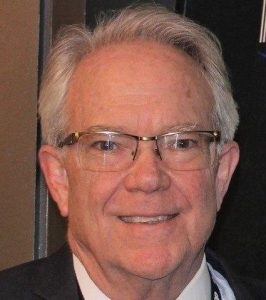State and local government CIOs and private sector experts made the message easy to understand at ATARC’s Nov. 1 webinar on Building for Secure MultiCloud Environments within State and Local Agencies: get moving on it now.
“I would say the biggest thing is get started,” said Kevin Tunks, Technology Advisor & Chief Architect at Red Hat. “It doesn’t get easier the longer you wait. Find a way to get started. Find people that you trust, find ways to experiment, to learn and keep moving forward.”
Panelists at the ATARC event – Keson Khieu, CIO of California’s Emergency Medical Services Authority; Dallas CIO Bill Zielinski; and James Grant, Florida’s Chief Information Officer – offered copious ideas, cautions, and best practices for state and local government leaders.
The webinar’s description laid out the challenges facing state and local government IT leadership in all their glory: embracing a decentralized modern enterprise IT environment means accepting that mission critical workloads dispersed throughout the enterprise don’t just run inside of the data center anymore. Today’s customer and employee experience demands from the business programs are rapidly forcing IT leaders to adapt and adopt a hybrid environment approach.
Applications and data are increasingly spread among multiple agencies, legacy data centers, hyperscaler cloud vendors, software as a service providers, and the operational technology edge.
As the session organizers warned, “these assets must be synthesized, secured, orchestrated, monitored and maintained over time.” Obviously, no mean thing, as managing this decentralized environment comes with challenges and complexities.
The path forward to a multicloud environment, the panelists emphasized will require a new strategy, the right investments, and trusted partners – especially trusted partners.
If state and local governments do this right the rewards can be huge – positively impacting critical areas including health and human services, transportation, public safety and enterprise administrative systems by optimizing the workforce, increasing security, improving cloud cost-effectiveness, reducing legacy application technical debt, and accelerating time-to-business value delivery.
Much of the discussion revolved around the risks and rewards of a trusted vendor(s) strategy.
Florida CIO Grant was quite excited about his open market strategy in terms of the multicloud environment. “You can go single vendor and go really, really deep with your cloud strategy. However, if I have one vendor for something, they’re in control, if I have two or more vendors, I’m driving the marketplace, and the competition effects are timeless.”
In this way Florida can create the competitive marketplace, incentivize and reward good behavior, and discourage the bad. “That creates a healthier P&L for their partners that are doing the right thing, and a loss for vendors who are doing the wrong thing,” Grant said.
“So if I can put our agencies in our state in a position where we can one day shop for cloud the same way we drive by gas stations, we’re doing the right thing, because we’re able to look at it and say, hey, look, I’m not going to be held hostage in this environment for a price, or security, or a functionality reason,” Grant said.
“If I’m going to have liquidity to go places based on best value for the constituent, then I think we’ve done multicloud right,” he said.
Dallas CIO Zielinski, weighed in with an explicit example that points up the importance of achieving a necessary balance.
“You can’t on one hand say, ‘everybody stop, all of you 45 departments, you can’t move forward with meaningful functionality until I, the guru, have figured out what the perfect infrastructure is for you to run things right.’ You’ll be gone quickly if you are standing in the way of forward progress.”
On the other hand, Zielinski said he can’t allow the 45 departments to all go out there with an incremental strategy in a wholly unchecked and unbalanced manner.
“You’re going to find yourself with a lot of complexity,” he said. “You’re going to find yourself with a lot of security vulnerabilities and you’re going to find yourself with a lot of runaway costs.” So that desired balance is looking for those targets of opportunity, those mission areas of the city that the more autonomous agencies are avoiding conversations about coordination.
“Like public safety folks,” he continued. “They’re thinking about cameras, but before we move forward with our strategy for cameras, let’s make sure everybody’s on the same page.”
“I have a responsibility for enabling those missionaries to move forward with the capabilities that they need, but also find the way in which we can deliver those services in a rational sort of way,” the Dallas CIO said.
How can he enable folks to move forward while at the same time addressing those aspects that make this unmaintainable or insecure?
“I think finding that place where you can weigh yourself in, but not control whether they should be moving forward with these things; but calling out those initiatives that are the common components or common parts that we can really move forward with and in a rapid way provide the platform on which they can they can run these services,” Zielinski said.
So the message to the SLG CIO is simple: Get started, but pick your agency battles judiciously.

